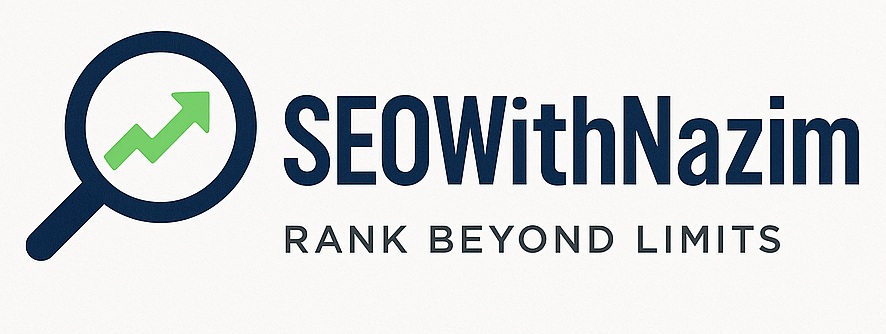In 2025, page speed optimization is crucial for SEO and user experience. Key strategies include optimizing images, minifying CSS/JS, reducing JavaScript execution, enabling browser caching, using CDNs, and improving server response.
Essential tools for page speed testing like PageSpeed Insights, GTmetrix, and WebPageTest help identify issues, while practical tips for faster page speed ensure smooth, fast-loading websites.
key takeaways:
- Fast-loading websites improve user experience, SEO, and conversions.
- Core techniques include optimizing images, minifying CSS/JS, reducing JavaScript execution, and enabling browser caching.
- Using CDNs, optimizing fonts, improving server response, and reducing redirects boost performance.
- Mobile optimization and Core Web Vitals are essential for 2025.
- Regular testing with tools like PageSpeed Insights, GTmetrix, and WebPageTest ensures consistent speed.
- Reducing third-party scripts and database optimization further enhances load times.
What is Page Speed Optimization?
Page speed optimization is the process of improving how quickly a webpage loads and responds to user actions. It focuses on reducing the time between when a visitor clicks on a link and when the page is fully displayed. Fast-loading websites keep users engaged, improve search engine rankings, and reduce bounce rates.
Optimization involves techniques like compressing images, minimizing code, improving server efficiency, and caching frequently used resources. In 2025, page speed optimization is more critical than ever because search engines continue to prioritize user experience. A slow site can cost businesses traffic, conversions, and overall credibility online.
Why Is Page Speed Important?
- User Experience: Visitors expect instant responses. If a page takes longer than 3 seconds to load, most users leave.
- SEO Rankings: Google uses speed as a ranking factor, making it vital for search visibility.
- Mobile-First Indexing: With most traffic coming from mobile, a slow mobile site harms visibility and engagement.
- Conversion Rates: Studies show that faster sites convert at higher rates because they create smoother browsing experiences.
- Core Web Vitals: Metrics like Largest Contentful Paint (LCP) and First Input Delay (FID) directly depend on page speed.
- Reduced Bounce Rate: Faster websites keep visitors longer, which signals quality to search engines.
- Competitive Advantage: In crowded niches, a quick website helps you stand out and retain customers.
What Is a Good Website Speed?
| Website Type | Acceptable Speed (Seconds) | Recommended Target (Seconds) | Notes |
| Informational Blog | 2.5 – 3.0 | Under 2.0 | Readers expect fast article access. |
| E-commerce Website | 2.0 – 2.5 | Under 2.0 | Slow checkout pages reduce sales. |
| News & Media | 1.5 – 2.0 | Under 1.5 | News consumers demand instant updates. |
| SaaS or Web Apps | 2.0 – 3.0 | Under 2.0 | Performance affects customer retention. |
| Portfolio/Personal Site | 2.5 – 3.5 | Under 2.5 | Speed boosts professionalism. |
📊 Insight: A load time of under 2 seconds is the current benchmark for high-performing websites in 2025. Anything slower can impact engagement and rankings.
How to Measure Website Speed
To know if a site is performing well, you need to use page speed testing tools. These tools simulate user interactions and provide metrics such as page load time, Core Web Vitals, and server response delays. Google PageSpeed Insights, GTmetrix, Pingdom, and WebPageTest are widely used.
They provide performance grades and practical suggestions for improvement. Measuring speed involves testing across devices (desktop and mobile), different browsers, and various network conditions. Speed tests should be run regularly because updates, plugins, or hosting changes can affect performance. By consistently tracking results, website owners can apply targeted page speed techniques that deliver faster and more reliable experiences.
Main methods for page speed optimization:
Key methods include optimizing images with modern formats, minifying and compressing CSS, JavaScript, and HTML, reducing JavaScript execution, improving server response time, leveraging browser caching, optimizing CSS delivery, reducing HTTP requests, enabling a CDN, optimizing fonts, improving Core Web Vitals, minimizing redirects, optimizing databases, reducing third-party scripts, and ensuring mobile-friendly performance.
1. Optimize Images
Images are often the heaviest elements on a web page. Large or unoptimized images can significantly slow down your site, impacting page speed optimization. Optimizing images involves reducing file size without losing quality and using modern formats. Popular formats in 2025 include WebP, AVIF, and JPEG 2000.
Techniques for image optimization:
- Compress images using tools like TinyPNG, ImageOptim, or ShortPixel.
- Serve responsive images using srcset to load the correct size.
- Implement lazy loading for off-screen images.
- Use vector images (SVG) for logos and icons.
Comparison of Image Formats:
| Format | File Size | Quality | Browser Support | Best Use Case |
| JPEG | Medium | Good | All major | Photos |
| PNG | Large | High | All major | Transparent images |
| WebP | Small | Good | Most modern | Web photos & graphics |
| AVIF | Very Small | Excellent | Chrome, Firefox, Edge | High-quality web images |
By implementing these techniques, you can drastically improve load times and reduce bandwidth usage, contributing to faster page speed.
2. Minify and Compress Resources
Minifying CSS, JavaScript, and HTML removes unnecessary spaces, comments, and characters, reducing file sizes. Compressing resources with GZIP or Brotli ensures files load faster.
Steps to implement:
- Minify HTML using tools like HTMLMinifier.
- Minify CSS and JavaScript using tools like CleanCSS or UglifyJS.
- Enable GZIP or Brotli compression on the server.
- Avoid inline scripts that block rendering.
These steps reduce the amount of data sent to the browser, improving how to optimize page speed significantly.
3. Reduce JavaScript Execution
Heavy JavaScript can block rendering and delay page interactivity. Reducing JavaScript execution is crucial for improving page speed techniques.
- Identify unused scripts with Chrome DevTools Coverage or Lighthouse.
- Split code using modular JavaScript or code-splitting frameworks like Webpack.
- Defer non-critical scripts with defer or async attributes.
- Remove unnecessary libraries or replace them with lightweight alternatives.
Efficient JavaScript execution ensures that your page becomes interactive faster, improving metrics like First Input Delay (FID) and contributing to tips for faster page speed.
4. Improve Server Response Time
Server response time directly impacts page speed. A slow server delays the delivery of the first byte, affecting how to optimize page speed.
- Choose a reliable hosting provider with fast server infrastructure.
- Use caching at server level with Redis or Varnish.
- Optimize database queries to reduce latency.
- Use HTTP/2 or HTTP/3 to improve request handling.
A response time under 200ms is recommended for optimal performance. Reducing server latency ensures faster page load and better user experience, making it a core element of page speed optimization.
5. Use Browser Caching
Browser caching stores static resources locally, allowing repeat visitors to load pages faster. Implementing caching involves:
- Set proper Cache-Control headers for static files.
- Use Expires headers for long-term caching.
- Enable ETags to verify resource changes.
- Update cache versions when assets change to prevent stale content.
- Cache fonts, images, and CSS files to reduce repeat downloads.
Effective caching reduces server requests and enhances page speed techniques, especially for returning visitors.
6. Optimize CSS Delivery
Render-blocking CSS slows page loading. Optimizing CSS delivery ensures faster content display:
- Extract critical CSS for above-the-fold content and inline it.
- Load non-critical CSS asynchronously using media attributes.
- Minify CSS to remove unnecessary spaces and comments.
- Avoid multiple CSS files that increase HTTP requests.
Optimized CSS delivery improves First Contentful Paint (FCP) and contributes to tools for page speed efficiency.
7. Reduce HTTP Requests
Every resource loaded on a page adds an HTTP request. Reducing requests is essential for page speed optimization:
- Combine CSS and JS files where possible.
- Use image sprites or inline small icons as SVG.
- Remove unnecessary plugins or third-party scripts.
- Load fonts and scripts asynchronously to prevent blocking.
Fewer requests mean faster load times and improved page speed testing tools metrics.
8. Enable Content Delivery Network (CDN)
A CDN distributes content across multiple servers worldwide, reducing latency and improving load times. Key steps:
- Select a reliable CDN provider like Cloudflare, AWS CloudFront, or Fastly.
- Configure caching rules to store static assets at edge servers.
- Optimize for HTTP/2 or HTTP/3 to maximize performance.
- Monitor CDN performance and adjust TTL for frequently updated content.
Using a CDN ensures consistent performance regardless of user location, enhancing tips for faster page speed.
9. Optimize Fonts
Fonts can significantly impact page load if not optimized:
- Use modern formats like WOFF2 for smaller file sizes.
- Preload critical fonts to avoid delays in rendering text.
- Limit the number of font families and variations.
- Use system fonts for basic text when possible.
- Subset fonts to include only required characters.
Proper font optimization reduces render-blocking elements and improves how to optimize page speed.
10. Core Web Vitals Optimization
Core Web Vitals focus on metrics critical to user experience. Steps to improve them include:
- Largest Contentful Paint (LCP): Optimize images, CSS, and server response to load primary content faster.
- First Input Delay (FID): Reduce JavaScript execution and use deferred scripts.
- Cumulative Layout Shift (CLS): Avoid layout shifts by specifying image sizes and using stable components.
- Use tools for page speed testing like Google PageSpeed Insights, GTmetrix, or WebPageTest to monitor performance.
- Continuously monitor Core Web Vitals and address regressions immediately.
Optimizing these metrics ensures better SEO rankings and improved user engagement.
11. Reduce Redirects
Redirects add extra HTTP requests and delay page rendering:
- Avoid unnecessary redirects between http → https → www.
- Replace multiple chained redirects with direct links.
- Use 301 redirects for permanent moves and avoid temporary 302 redirects when possible.
- Audit internal links to prevent repeated redirects.
Reducing redirects directly impacts page speed optimization and user experience.
12. Database Optimization
Database performance affects dynamic websites like WordPress or e-commerce platforms:
- Use indexing to speed up queries.
- Remove unused tables or entries.
- Optimize queries to avoid full table scans.
- Implement query caching to reduce repeated load on the database.
- Regularly monitor database performance with tools like MySQLTuner or phpMyAdmin.
A fast database reduces server response time and improves how to optimize page speed.
13. Reduce Third-Party Scripts
Third-party scripts can heavily slow down a website:
- Audit all external scripts (analytics, ads, chat widgets).
- Remove scripts that are not essential for business goals.
- Load scripts asynchronously or defer them to prevent render-blocking.
- Consider self-hosting critical scripts to reduce external requests.
- Monitor the impact of each script using Chrome DevTools or Lighthouse.
- Limit tracking pixels and advertising scripts that increase request times.
- Regularly review new scripts added by plugins or themes.
Reducing third-party scripts can have one of the largest impacts on page speed techniques, especially for large sites with multiple integrations.
14. Mobile Optimization
Mobile users now account for the majority of web traffic. Optimizing for mobile improves both speed and SEO:
- Implement responsive design to adapt layouts across devices.
- Use adaptive images to reduce mobile bandwidth usage.
- Optimize touch targets and font sizes for readability.
- Prioritize critical resources for mobile devices using lazy loading.
- Test mobile performance with page speed testing tools to identify bottlenecks.
Mobile optimization is a key component of tips for faster page speed and enhances user experience across devices.
The Right Tools: Premium & Free Page Speed Testing Tools
| Tool | Type | Features | Best For |
| Google PageSpeed Insights | Free | Core Web Vitals reports, mobile/desktop insights | General speed checks |
| GTmetrix | Free + Premium | Page speed grades, waterfall analysis | Developers & bloggers |
| Pingdom Tools | Premium | Uptime + performance monitoring | Large sites & agencies |
| WebPageTest | Free | Multi-location tests, advanced metrics | Technical SEO audits |
| Lighthouse (Chrome DevTools) | Free | In-browser audits, accessibility & SEO checks | Quick developer audits |
| Dareboost | Premium | Competitive analysis, continuous monitoring | Enterprise use |
| Uptrends | Premium | Real user monitoring + API checks | SaaS and large businesses |
📌 Pro tip: Use at least two tools (one free, one premium) for accurate insights. This ensures you capture both lab data and field data for speed measurement.
Conclusion
Page speed optimization in 2025 is more than a technical checklist—it’s a core part of SEO and user experience. A fast website not only ranks higher but also delivers smoother interactions, builds trust, and improves conversions. With techniques like image compression, optimized scripts, mobile-friendly design, and modern CDNs, any website can achieve top performance. Combine these methods with reliable page speed testing tools to track progress. In today’s competitive digital world, speed is no longer optional—it’s the foundation of a successful online presence.
FAQs:
· What is page speed optimization?
It improves how fast a webpage loads and responds, enhancing user experience, SEO, and conversions.
· Why is page speed important?
Faster sites boost engagement, rankings, mobile performance, conversion rates, and reduce bounce rates.
· How to measure website speed?
Use tools like PageSpeed Insights, GTmetrix, WebPageTest, and Lighthouse to track load times, Core Web Vitals, and server response.
· What are the main methods for page speed optimization?
Optimize images, minify CSS/JS, reduce JavaScript, improve server response, use CDNs, cache resources, and optimize mobile performance.
· Which tools help with page speed?
Google PageSpeed Insights, GTmetrix, Pingdom, WebPageTest, and Lighthouse provide testing, recommendations, and performance monitoring.

Nazim is a Bangladesh-based SEO specialist with years of hands-on experience in organic search growth. He runs seowithnazim.com, a blog dedicated to simplifying SEO through tutorials, tools, and step-by-step guides. Nazim focuses on actionable, ethical strategies that deliver long-term results.


Leave a Reply